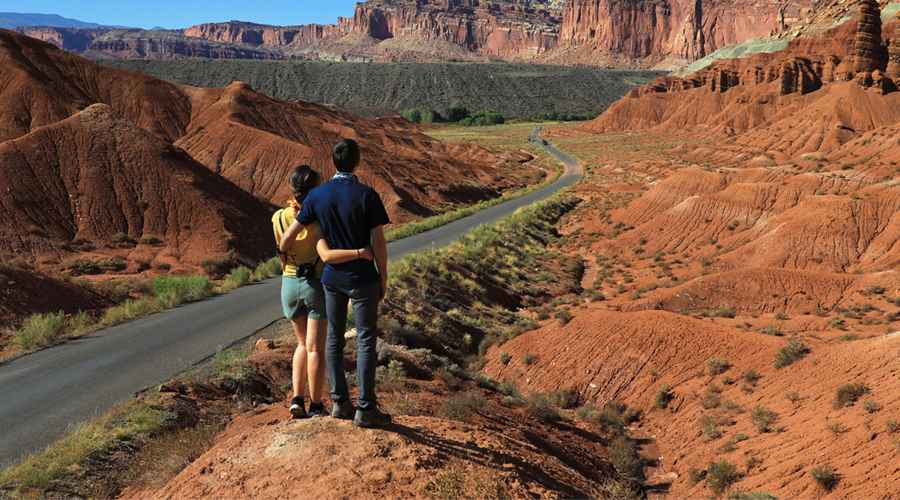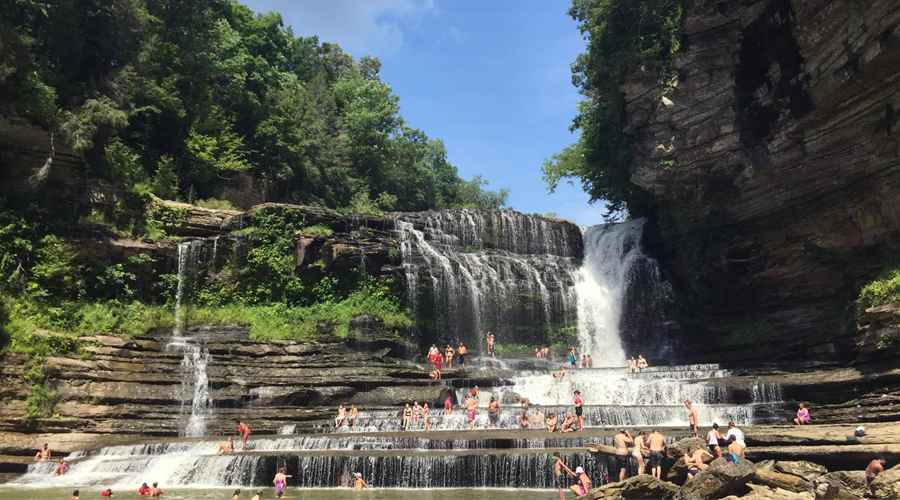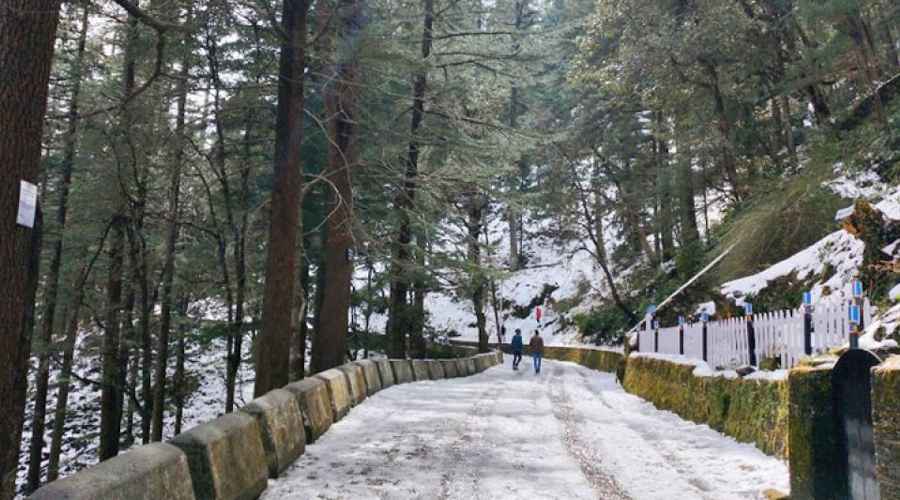Utah is one of the most breathtaking states in the U.S., home to landscapes that look almost otherworldly. From dramatic red rock formations to vast desert plateaus, Utah’s scenery draws millions of visitors every year. At the heart of this natural wonder lie the “Mighty 5” national parks—a collection of five iconic destinations that showcase the state’s diverse geology and history. These include Arches, Canyonlands, Capitol Reef, Bryce Canyon, and Zion National Park. Each offers something unique, making Utah a bucket-list destination for outdoor enthusiasts, photographers, and adventurers alike.
Let’s explore what makes each of these Big 5 parks so special.
1. Arches National Park
- Located just outside the town of Moab, Arches National Park is exactly what its name suggests: a desert wonderland filled with natural sandstone arches. In fact, the park is home to over 2,000 natural stone arches, the largest concentration in the world. These formations were created over millions of years by erosion, weathering, and geological shifts.
- Highlights: The most famous feature here is Delicate Arch, often seen on Utah license plates and one of the most photographed natural landmarks in America. Other must-see spots include Landscape Arch, Double Arch, and the Windows Section.
Activities: Hiking is the most popular way to explore, with trails ranging from easy walks to strenuous climbs. For stargazers, Arches is also an International Dark Sky Park, making it perfect for night photography.
Arches is a place where nature seems to have sculpted an open-air museum, showcasing the artistry of wind and time.
2. Canyonlands National Park
Also near Moab, but far larger in scope, Canyonlands National Park is a rugged, wild expanse of canyons, mesas, and rivers. Covering nearly 340,000 acres, it is divided into four distinct districts: Island in the Sky, The Needles, The Maze, and the rivers themselves (the Green and Colorado Rivers).
Highlights:
- Island in the Sky offers sweeping panoramic views, including the famous Mesa Arch, a favorite sunrise spot for photographers.
- The Needles features colorful rock spires and challenging backcountry trails.
- The Maze is remote and difficult to access, making it ideal for those seeking solitude.
Activities: Hiking, backpacking, river rafting, and off-road driving are popular. Because of its sheer size and remoteness, Canyonlands rewards those willing to venture beyond the beaten path.
This park truly captures the vastness and isolation of the American Southwest.
3. Capitol Reef National Park
Often considered the underdog of Utah’s Big 5, Capitol Reef is less crowded but equally captivating. Located in south-central Utah, the park is known for the Waterpocket Fold, a nearly 100-mile-long warp in the Earth’s crust. This unique geological feature creates a striking landscape of cliffs, domes, and canyons.
Highlights:
- The historic Fruita district, where early settlers planted orchards that still produce apples, cherries, and peaches. Visitors can even pick fruit in season.
- Scenic drives showcase towering cliffs and dramatic rock formations.
Activities: Hiking trails range from short strolls to challenging treks. The park is also great for camping, rock climbing, and scenic photography.
Capitol Reef’s combination of geology, history, and quiet charm makes it a hidden gem compared to its more famous neighbors.
4. Bryce Canyon National Park
Bryce Canyon, located in southern Utah, is unlike any other park in the world. Instead of canyons, it features natural amphitheaters filled with hoodoos—tall, thin rock spires shaped by frost and erosion. These formations create a surreal, fairy-tale landscape, especially at sunrise and sunset when the rocks glow in shades of red, orange, and gold.
Highlights:
- Bryce Amphitheater, the park’s centerpiece, can be viewed from popular overlooks like Sunset Point and Inspiration Point.
- Trails like Navajo Loop and Queen’s Garden allow hikers to walk among the hoodoos.
Activities: In addition to hiking, Bryce is renowned for its stargazing, as the park boasts some of the darkest skies in the U.S. Winter also brings opportunities for snowshoeing and cross-country skiing.
Bryce Canyon is a place where geology feels magical, offering a landscape that is both whimsical and awe-inspiring.
5. Zion National Park
Zion is the crown jewel of Utah’s national parks and the most visited of the Mighty 5. Located in the state’s southwest corner, it is known for its towering sandstone cliffs, lush valleys, and narrow slot canyons.
Highlights:
- The Narrows, a hike through the Virgin River between 1,000-foot-high canyon walls.
- Angels Landing, a challenging trail with dramatic views and thrilling drop-offs, is one of the most iconic hikes in the world.
- The Emerald Pools and Observation Point offer other rewarding hikes for various skill levels.
Activities: Beyond hiking, visitors can enjoy canyoneering, rock climbing, and scenic drives. Zion also provides shuttle services to manage crowds and protect the environment.
Zion combines accessibility with grandeur, making it an unforgettable destination for all types of travelers.
Why Visit All Five?
Each of Utah’s Mighty 5 national parks has its own personality. Arches showcases delicate rock formations, Canyonlands highlights vast wilderness, Capitol Reef blends geology with pioneer history, Bryce Canyon enchants with whimsical hoodoos, and Zion immerses you in towering cliffs and canyons. Together, they represent some of the most dramatic and diverse landscapes in the United States.
For those who love road trips, it’s possible to see all five parks in a single journey, often referred to as the Mighty 5 road trip. Spanning roughly 1,000 miles, this adventure is a once-in-a-lifetime experience that lets travelers witness Utah’s natural beauty in all its forms.
Final Thoughts
The **Big 5 national parks of Utah—Arches, Canyonlands, Capitol Reef, Bryce Canyon, and Zion—**are more than just scenic destinations. They are testaments to the power of nature and time, offering landscapes that inspire wonder, adventure, and reflection. Whether you’re hiking a rugged trail, camping under starry skies, or simply standing in awe of the view, these parks remind us of the beauty and fragility of the natural world.
For anyone who loves the outdoors, visiting Utah’s Mighty 5 is not just a trip—it’s a journey into the heart of Earth’s natural wonders.




